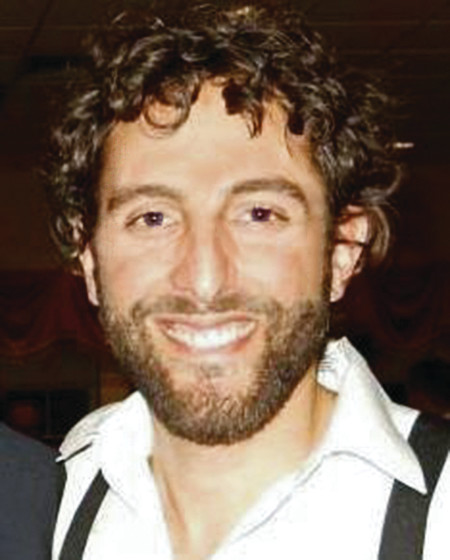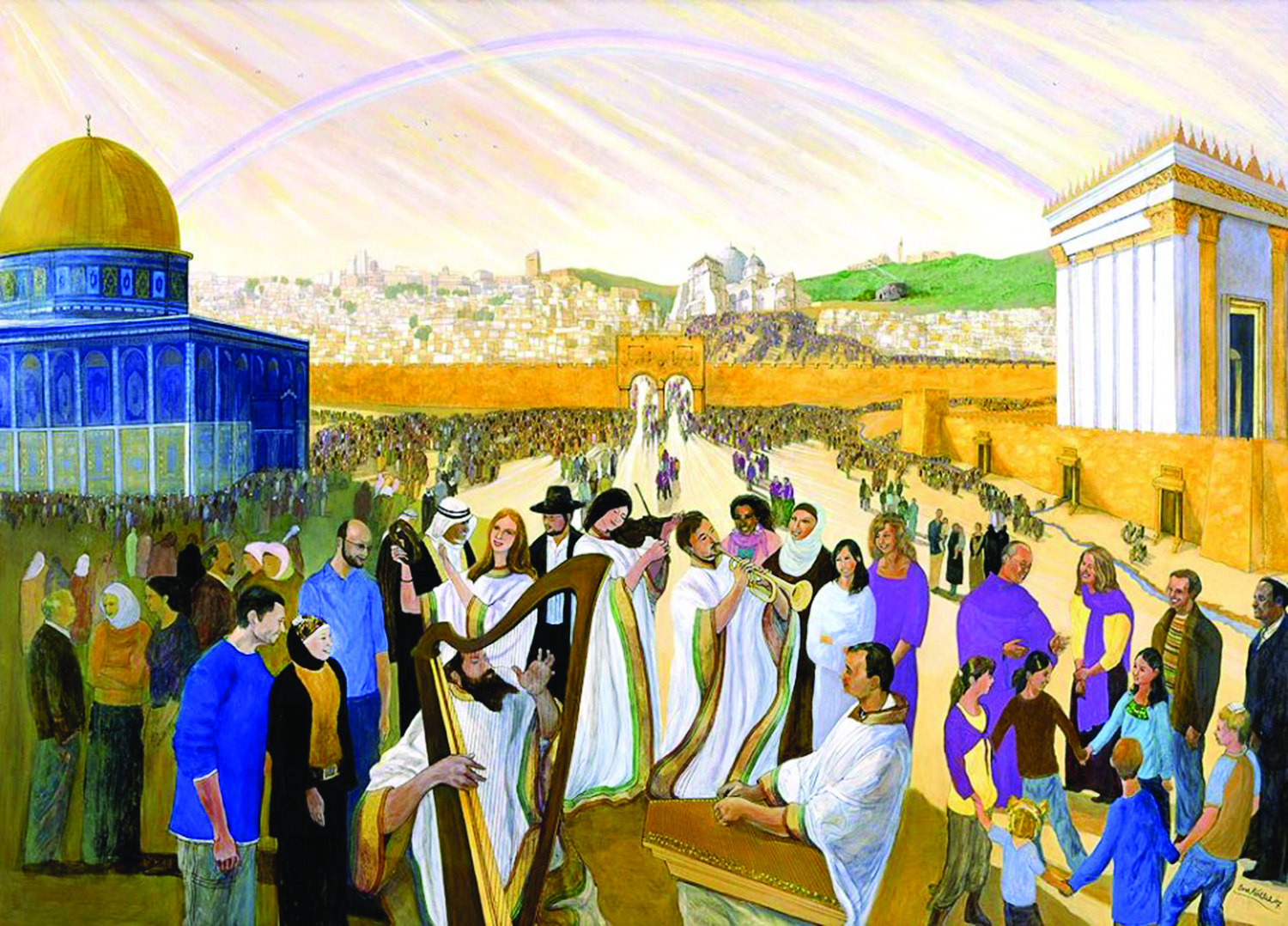Building a mini-Temple for Hanukkah
Hanukkah means “Dedication.” After the Maccabees won back the Holy Temple, they lit the menorah to dedicate the Beit Hamikdash (Holy Temple). They found one cruse of olive oil that had been sealed by the high priest. They had only enough oil for one night, but a miracle occurred, and they were able to light for eight nights.
It was the last collective miracle we experienced as a Jewish people. When people saw the light flickering in the windows, they felt that God’s presence was with them again.
Today, we light a nine-branched menorah instead of a seven, and instead of lighting one big menorah, the mitzvah of Hanukkah is “ner ish uveito” – each person lights in their own house. As we gaze at the candles, we sing “Rock of Ages” (“Ma’oz Tzur”): “Mighty rock …. Restore the house of my prayer and there we will offer you thanksgiving.”
Deeply encoded in the Jewish soul is a 2,000-year-old longing to return to Jerusalem and rededicate the House of God. The groom breaks a glass at the end of every Jewish wedding ceremony to remember the destruction of the Temple. We fast and mourn specific moments in the loss of the First and Second Temple. We pray three times a day in the Amidah to “build it soon and in our day as an eternal structure,” and on Shabbat, to “lead us back in joy to our land and plant us within our borders. There we will prepare our obligatory offerings ....”
Much of the Torah is dedicated to the details of offerings that were prepared and eaten by the Kohanim (priestly tribe). Maimonides held that animal sacrifices were a concession by God because it was what humans needed at the time. He raised the possibility that the Third Temple could be vegan. As long as we continue to eat meat, the rituals of the Temple could bring holiness to the way we prepare and eat animals.
The mitzvah to build the Temple comes from the verse “Ve’Asu Li Mikdash”: “They shall build me a sanctuary and my presence will dwell within them.”
After the Romans destroyed the Second Temple, our sages teach that the light of the Shechina (the feminine divine presence) became hidden.
In 1967, the Temple Mount was recaptured from the Jordanian government. Since then, Israeli archeologists have made many discoveries from the First and Second Temple period.
The golden Dome of the Rock was built on the Temple Mount in the 7th century. Muslims believe it is the spot where Muhammad ascended into heaven. The Al-Aqsa Mosque is also an important sacred site there.
When Israel regained control of the Temple Mount, the government quickly gave it to the Muslim Waqf to manage, in order to keep peace. Jewish worshipers are not permitted to enter the Temple Mount. If the police see a Jewish person davening (praying) or shukeling (swaying) there, they can be fined and arrested.
Is this really the limit of our vision for Jerusalem? The prophet Isaiah was given a much grander vision for humankind: “I will bring them to my sacred mount and let them rejoice in my house of prayer. Their burnt offerings and sacrifices shall be welcome on my altar; for my house will be called A House of Prayer for All Peoples” (56:7).
A few dreamers of Zion have begun to ask an outrageous question: “What if the Temple were built in peaceful proximity to the Islamic and Christian shrines in Jerusalem, would this not be a fulfillment of the purpose of the Temple – to manifest the one God to the entire world?” Of course, this would require a level of peace and coordination among the three Abrahamic faiths that we have never seen before. But maybe that’s just the point!
If this all sounds meshugga (crazy) to you, please know that I am just trying to get people to think more deeply about Torah. We certainly don’t need a Holy Temple to serve God right now. Hanukkah means dedication because we light a candle and rededicate ourselves to family and community. Each of us can dedicate a mikdash me’at, a mini-Temple, by filling our homes and synagogues with the light of Torah and mitzvot.
According to the prophets, the Third Temple will never be destroyed, will not be built by the hands of man and will appear in the blink of an eye.
If the Garden of Eden was God’s original plan for holiness (and not a building), then maybe the real Third Temple will be … creation itself! And it will happen in the blink of an eye, when we realize that we are actually Adam and Eve, and that we are in the Garden of Eden, and that right now God is walking with us in the Garden.
Chag Urim Same’ach – Happy Festival of Lights!
RABBI AARON PHILMUS is the rabbi at Temple Torat Yisrael, in East Greenwich.











